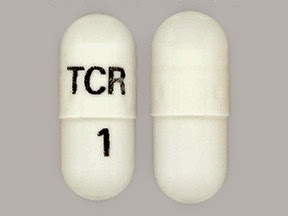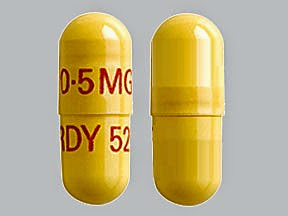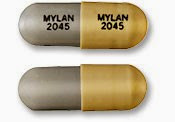TACROLIMUS TOPICAL
(ta KROE li mus) Brand: Protopic










What is the most significant information I must know about tacrolimus topical?
• You must not use tacrolimus topical if you are allergic to it.
• Till using tacrolimus topical, speak your doctor if you have skin cancer or a skin infection (including herpes or chickenpox), any genetic skin mess (such as Netherton's syndrome), a weak immune system, kidney malady, or swelling, redness, or irritation of big areas of your skin.
• Tacrolimus can lower the blood cells that help your body fight infections. This can create it easier for you to get sick from a virus such as chicken pox or herpes (cold sores or shingles). Speak your doctor if you have been exposed to any illness.
• Avoid sunlight, sun lamps, tanning beds, and phototherapy treatments with UVA or UVB easy. If you should be outdoors, wear loose clothing over the skin areas treated with tacrolimus topical. Do not use sunscreen on treated skin unless your doctor has told you to.
• Conversation to your doctor if your skin condition does not improve after using tacrolimus topical for 6 weeks.
• Do not use this medicine on a baby younger than 2 years old.
• Some people have developed skin cancer or lymphoma after using tacrolimus or pimecrolimus (Elidel). However, it is not known if either of these medicines causes skin cancer or lymphoma. Conversation to your doctor about your individual risk.
What is tacrolimus topical?
• Tacrolimus is an immunosuppressant. It works by decreasing your body's immune system.
• Tacrolimus topical (for the skin) is used to treat severe atopic dermatitis (eczema).
• Tacrolimus may also be used for purposes not listed in this medicine guide.
What must I discuss with my healthcare provider till using tacrolimus topical?
• You must not use tacrolimus topical if you are allergic to it.
• To create certain you can safely use tacrolimus topical, speak your doctor if you have any of these another conditions:
· skin cancer or a skin infection (including herpes or chickenpox);
· any genetic skin mess (such as Netherton's syndrome);
· a weak immune system (caused by malady or by using determined medicines);
· kidney malady; or
· swelling, redness, or irritation of big areas of your skin.
• Tacrolimus can lower the blood cells that help your body fight infections. This can create it easier for you to get sick from a virus such as chicken pox or herpes (cold sores or shingles). Speak your doctor if you have been exposed to any illness.
• Some people have developed skin cancer or lymphoma after using tacrolimus or pimecrolimus (Elidel). However, it is not known if either of these medicines causes skin cancer or lymphoma. Conversation to your doctor about your individual risk.
• FDA pregnancy category C. It is not known whether tacrolimus topical will harm an unborn child. Speak your doctor if you are pregnant or plan to become pregnant while using this medication.
• Tacrolimus topical can pass into breast milk and may harm a nursing child. Do not use this medicine without telling your doctor if you are breast-feeding a baby.
• Do not use tacrolimus topical on a baby younger than 2 years old.
How must I use tacrolimus topical?
• Use exactly as predesigned by your doctor. Do not use in larger or less amounts or for longer than recommended. Follow the directions on your prescription label.
• If you are using this medication on a baby younger than 16 years old, use only the 0.03% ointment. The 0.1% ointment is for adults and children who are at least 16 years old, but is too strong to use on younger children.
• Wash your hands till and after using tacrolimus, unless you are using the medicine to treat a arm condition.
• Apply the medication in a thin layer, only to skin areas affected by eczema. Do not cover the treated skin with a bandage.
• Do not bathe, shower, or swim right after applying tacrolimus topical. Water may wash off the medicine.
• You may need to use a moisturizing cream or lotion to hold your skin from getting too dry. Ask your doctor about which moisturizer to use.
• Tacrolimus is not for long-term use. Stop using the medication once your symptoms have cleared up, unless your doctor has told you otherwise.
• Call your doctor if your symptoms do not improve after 6 weeks of treatment, or if they get worse while using tacrolimus.
• Store at room temperature. Do not freeze. Hold ointment pipe tightly closed when not in use.
What happens if I miss a dose?
• Apply the missed doze as soon as you remember. Skip the missed doze if it is nearly time for your following scheduled doze. Do not use extra medication to create up the missed dose.
What happens if I overdose?
• An overdose of tacrolimus topical is not expected to be dangerous. Search abnormal medical attention or call the Poison Help line at 1-800-222-1222 if anyone has accidentally swallowed the medication.
What must I avoid while using tacrolimus topical?
• Avoid using another medications on the areas you treat with tacrolimus topical unless your doctor tells you to.
• Avoid exposure to sunlight or tanning beds, and phototherapy treatments with UVA or UVB easy. If you should be outdoors, wear loose clothing over the skin areas treated with tacrolimus topical. Do not use sunscreen on treated skin unless your doctor has told you to.
• Drinking alcohol while you are using tacrolimus topical may reason your skin or person to feel hot and become flushed or red.
What are the possible side effects of tacrolimus topical?
• Get abnormal medical help if you have any of these signs of an allergic reaction: hives; difficult breathing; swelling of your person, lips, tongue, or throat.
• Stop using tacrolimus and call your doctor at once if you have a serious side effect such as:
· severe stinging, burning, itching, or soreness where the medication is applied;
· swollen glands;
· redness or crusting near your hair follicles; or
· signs of a skin infection (redness, swelling, itching, oozing).
• Smaller serious side effects may include:
· mild burning, stinging, or itching;
· skin redness;
· acne;
· cool or flu symptoms such as stuffy nose, sneezing, sore throat;
· headache; or
· feeling more sensitive to hot or cool temperatures.
• This is not a complete list of side effects and others may occur. Call your doctor for medical advice about side effects. You may message side effects to FDA at 1-800-FDA-1088.
What another drugs will affect tacrolimus topical?
• It is not likely that another drugs you take orally or inject will have an effect on topically applied tacrolimus topical. But an interaction may occur if you apply tacrolimus over big skin areas. Speak your doctor about all another medicines you use, especially:
· conivaptan (Vaprisol);
· imatinib (Gleevec);
· isoniazid (for treating tuberculosis);
· an antibiotic such as clarithromycin (Biaxin), erythromycin (E.E.S., EryPed, Ery-Tab, Erythrocin, Pediazole), or telithromycin (Ketek);
· an antidepressant such as nefazodone;
· antifungal medicine such as clotrimazole (Mycelex Troche), itraconazole (Sporanox), ketoconazole (Extina, Ketozole, Nizoral, Xolegal), miconazole (Oravig), or voriconazole (Vfend);
· heart or blood pressure medicine such as nicardipine (Cardene) or quinidine (Quin-G);
· HIV/AIDS medication such as atazanavir (Reyataz), delavirdine (Rescriptor), fosamprenavir (Lexiva), indinavir (Crixivan), nelfinavir (Viracept), saquinavir (Invirase), or ritonavir (Norvir, Kaletra);
• This list is not complete and another drugs may interact with tacrolimus topical. Speak your doctor about all medications you use. This includes prescription, over-the-counter, vitamin, and herbal commodity. Do not start a new medicine without telling your doctor.
Where can I get more information?
• Your pharmacist can provide more information about tacrolimus topical.
Remember, hold this and all another medicines out of the reach of children, never share your medicines with others, and use this medicine only for the indication prescribed.
Disclaim: Each effort has been made to ensure that the information provided by Cerner Multum, Inc. ('Multum') is accurate, up-to-date, and complete, but no guarantee is made to that effect. Drug information contained herein may be time sensitive. Multum information has been compiled for use by healthcare practitioners and consumers in the United States and therefore Multum does not warrant that uses external of the United States are appropriate, unless specifically indicated otherwise. Multum's drug information does not endorse drugs, diagnose patients or recommend therapy. Multum's drug information is an informational resource designed to assist licensed healthcare practitioners in caring for their patients and/or to serve consumers viewing this service as a supplement to, and not a substitute for, the expertise, skill, knowledge and judgment of healthcare practitioners. The absence of a warning for a given drug or drug combination in no way must be construed to indicate that the drug or drug combination is safety, effective or appropriate for any given patient. Multum does not assume any responsibility for any aspect of healthcare administered with the help of information Multum provides. The information contained herein is not intended to cover all possible uses, directions, precautions, warnings, drug interactions, allergic reactions, or adverse effects. If you have questions about the drugs you are taking, check with your doctor, nurse or pharmacist.